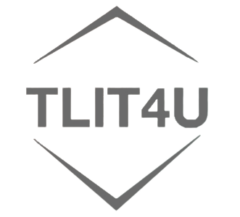Cranky Uncle

| Full name | Cranky Uncle |
| Description | The Cranky Uncle app builds resilience against misinformation: it explains common science denial techniques, such as the use of fake experts, logical fallacies, impossible expectations and cherry-picking data, equipping users with the skills needed to spot inaccuracies in the real world and online. The app is based on inoculation theory, the idea that people can be protected against influence by exposure to weakened forms of a threat – in this case, climate crisis denial, by building immunity against science denial by explaining the rhetorical techniques and fallacies used to mislead. |
| Producer | Content and cartoons created by John Cook from the Melbourne Center for Behaviour Change at the University of Melbourne. Game developed by Goodbeast. |
| Genre | Serious game |
| Available platforms | web https://app.crankyuncle.info/about |
| Year of production | 06.2020 |
| Purpose of the game | In the game, users navigate a series of cartoon scenarios that explain how different tactics are employed, before answering quiz questions to test their knowledge.In one scene, used to demonstrate the use of anecdotal arguments, Cranky Uncle is seen shivering in the cold proclaiming that global warming doesn’t exist, and then standing at night saying the sun doesn’t exist.The app prototype has been trialled in community colleges and universities, and Cook says that after only 30 minutes of gameplay, critical thinking among users was improved. |
| Player(s) (single/multiplayer) | single player |
| Language | Multilingual |
| License | Copyright © 2022 John Cook crankyuncle.com |
| Resource type | Game | |
| URL | https://app.crankyuncle.info/about | |
| General objectives | ||
| Learning | Yes | |
| Entertainment | Yes | |
| Ethical | ||
| Others | ||
| Related topics/Glossary – Keywords | Rhetorical techniques; disinformation, conspiracy theory | |
| Expected learning outcomes | ||
| Knowledge | Logical fallacies, structures and techniques to facilitate critical thinking | |
| Skills | To recognize and apply those structures. | |
| Abilities | To master critical thinking. | |
| Teaching methodologies/Activity outline | ||
| 1. Starting a challenge: (brainstorming problem situation. By asking the students questions, the teacher stimulates their thinking) | Suitable for homework. | |
| 2. Activation (In Class) / Explanation: (ask the students to watch the videos, read articles, etc. related to the learning outcomes) | ||
| 3. Processing: (ask your students to do this experience at home or in the classroom) | ||
| 4. Conclusion and evaluation reflections | A written evaluation of the learning experience, such as a learning journal, would be appropriate. | |
| Information and transliteracy competencies | ||
| Scores: 0 (none) to 5 (strong) | ||
| Critical Thinking | 5 | |
| Creativity | 3 | |
| ICT/Digital Skills | 2 | |
| Collaboration | 2 | |
| Information Skills | 5 | |
| STEAM competencies | ||
| Creative Thinking | 1 | |
| Critical Thinking | 5 | |
| Mathematical Thinking | 1 | |
| Scientific Thinking | 1 | |
| Activity development | ||
| Description of the game use to achieve the learning goals | The game is interesting and fun, the notion and the learning goals are helpful and clear; the game is a valuable tool to recap or rehearse what has been done in classroom. | |
| Required tool(s) | ||
| Instructions for students | ||
| Final Comments | ||
| Required settings | None | |
| Class management | ||
| Individual work | Yes | |
| Team work | ||
| Whole group | ||
| Time management | ||
| Short activity (< 1h) | ||
| Medium activity (>1h;<1 day) | Yes | |
| Long activity (> 1 day) | ||
| Sources/extra readings | None |
| Scores 1 (very poor) to 10 (excellent) | |
| Assessment | 8/10 |
| Playability | 8/10 |
| Lastability | 7/10 |
| Engagement level | 8/10 |
| User interface | 7/10 |
| Storytelling | 9/10 |
| Digital competence for avoiding fake content | 5/10 |
| Plan how to find a specific information | 3/10 |
| Identify and scope the necessary information | 6/10 |
| Evaluate the found information | 9/10 |
| Manage the information | 9/10 |
| Media literacy | 5/10 |
| Visual literacy | 7/10 |
